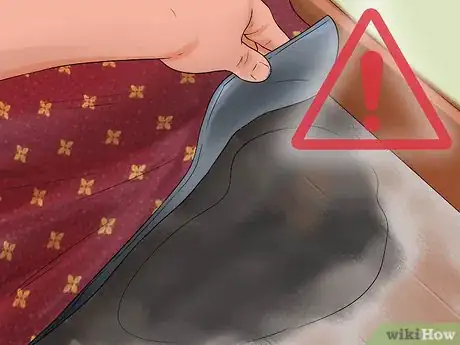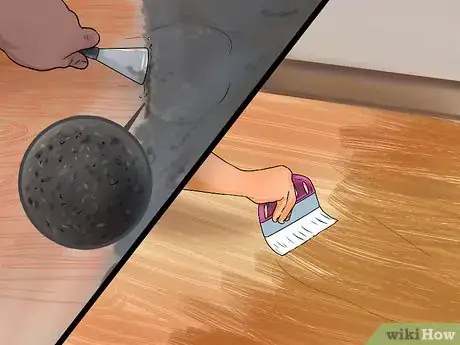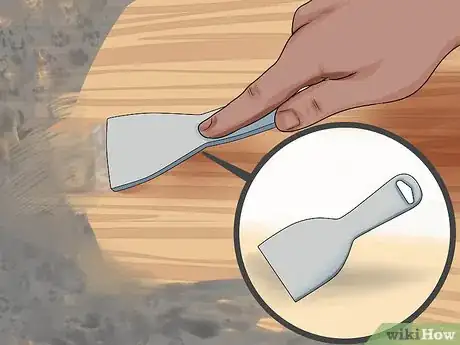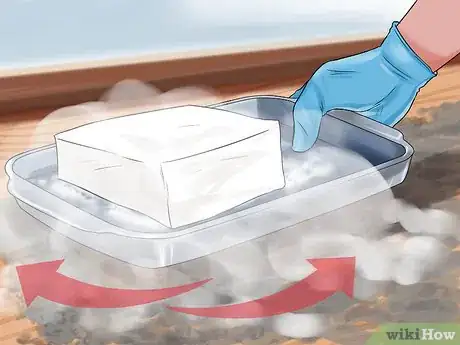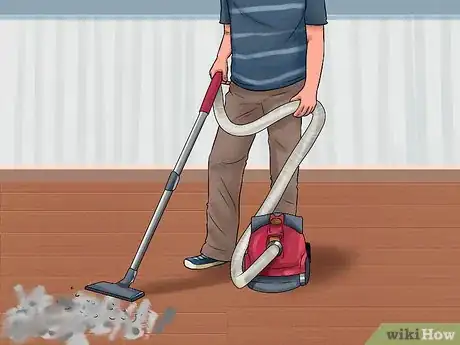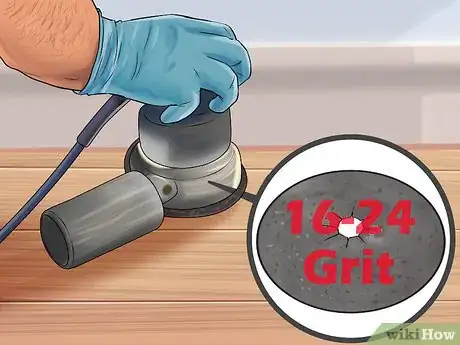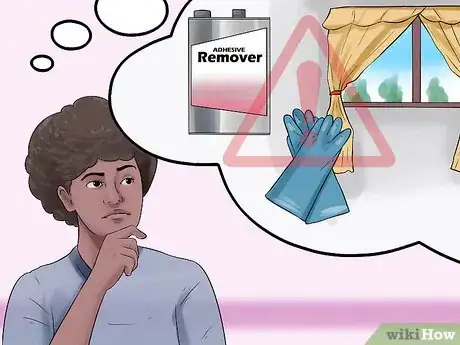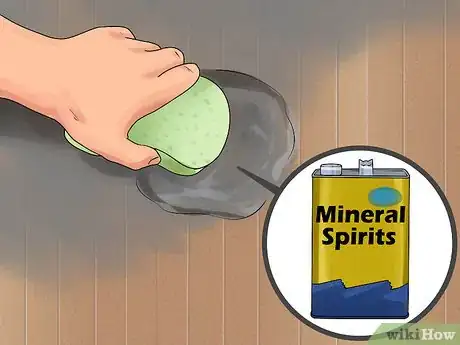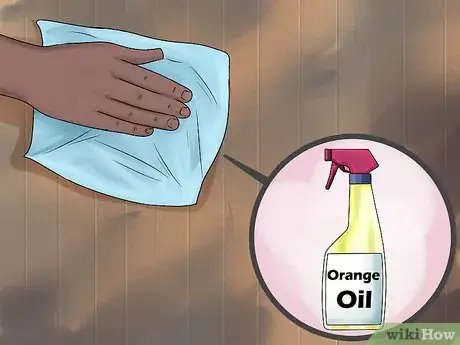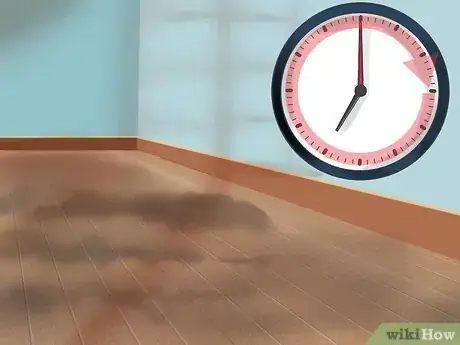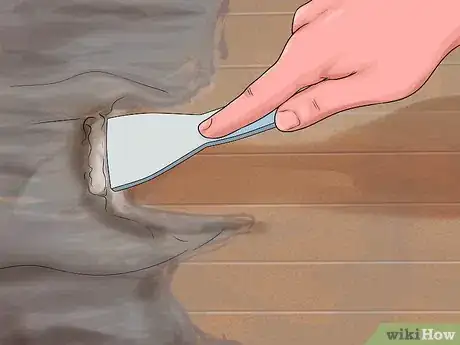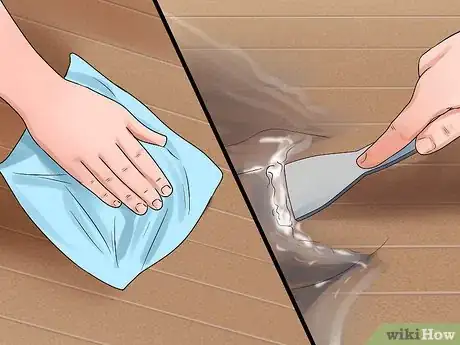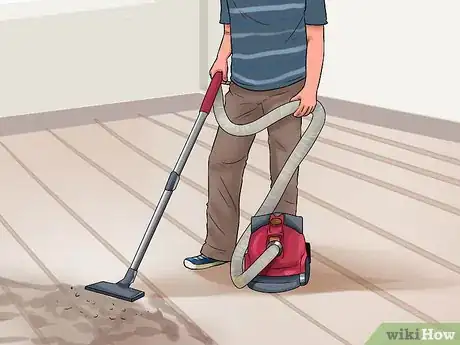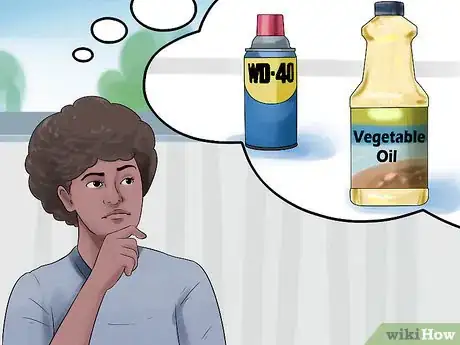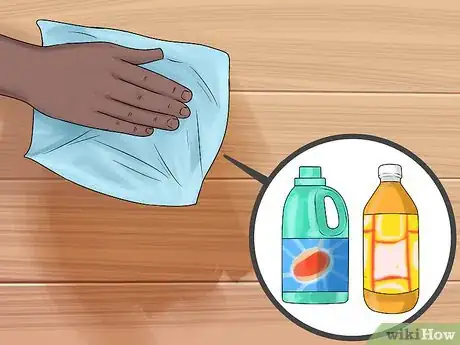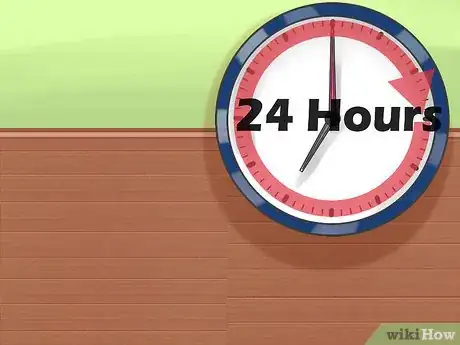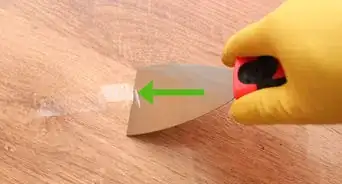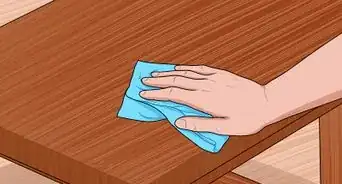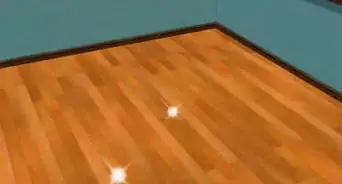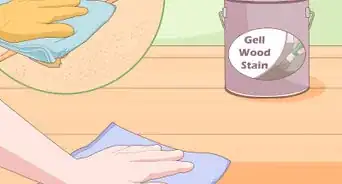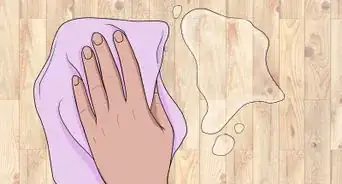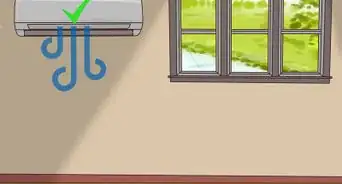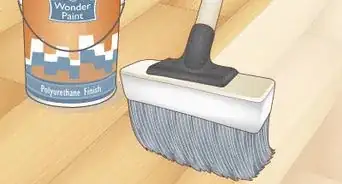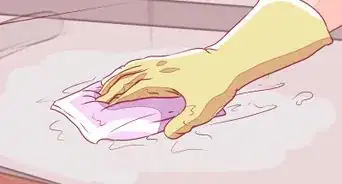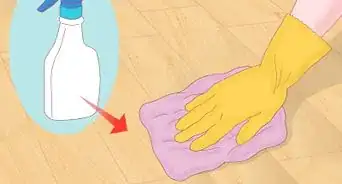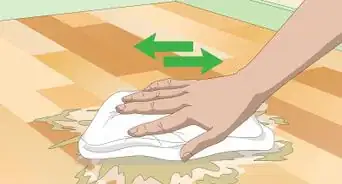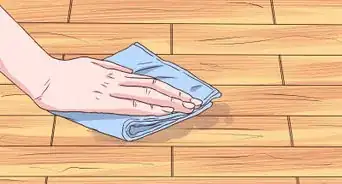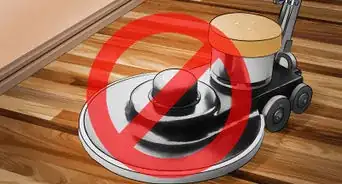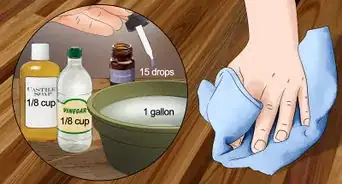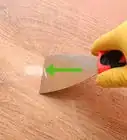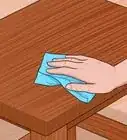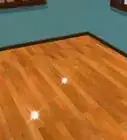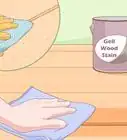This article was co-authored by Ashley Matuska. Ashley Matuska is a Professional Cleaner at the Founder and Owner of Dashing Maids in Denver, Colorado. Ashley has over seven years of experience in the cleaning industry. She and her team specialize in offering sustainable deep cleaning and maintenance cleaning services.
There are 11 references cited in this article, which can be found at the bottom of the page.
wikiHow marks an article as reader-approved once it receives enough positive feedback. In this case, several readers have written to tell us that this article was helpful to them, earning it our reader-approved status.
This article has been viewed 367,779 times.
Hardwood floors have many appealing features. They are easy to clean, durable, and aesthetically pleasing. If you've torn up a carpet to reveal this floor, however, you may have found a layer of carpet adhesive making a mess of the room. Removing this is usually possible without notable damage to the floor, but it will take a few tools and a good deal of time.
Steps
Scraping Off Adhesives
-
1Do not use this method on adhesives containing asbestos. Some adhesives, such as "cut-back" adhesives and "mastic," were often mixed with asbestos up until the late 1980s, and are still occasionally used today.[1] These adhesives were most commonly used to bond the floor to tiles or to heating and air ducts, not to carpets, and are often black in color. If you suspect your adhesive contains asbestos, do not use this method, as sanding or scraping the dry adhesive can release dangerous asbestos fibers into the air. Refer to the solvent section instead, or hire a professional to remove the asbestos.
-
2Know the benefits of this method. Chipping and scraping off the old adhesive can be tedious, although not much more so than using a solvent. The main benefit is a lower risk of discoloring the wood or clogging its pores. After using this method, it should be easy to bond a new stain or finish to the wood. However, if there is an existing finish you plan to leave on, or if you plan to cover the floor with a new carpet, the solvent method may save you some time.
- Note: renting a wet/dry vacuum from a tool rental service is highly recommended for quick, safe cleanup after the adhesive is removed.
Advertisement -
3Use a plastic putty knife to chip off the adhesive. If you're lucky, the adhesive will chip right off when you apply pressure with a putty knife. Some areas may take more pressure than others. Only use a plastic putty knife, not metal, to avoid scratching the floor. If the adhesive only comes off in tiny chips, try making it easier to remove with dry ice as described below, or use solvents instead.
- Pick the widest putty knife you can find to make the task less tedious.
-
4Consider using dry ice. If you plan to apply a new stain or finish to the floor, this is your best option for making adhesive removal easier without affecting the wood pores. Place pieces of dry ice in a cookie tray and slide the tray over each section of adhesive before you chip, to make the glue brittle and easier to remove. Always follow these safety precautions before you buy dry ice:[2]
- Wear thick gloves while handling dry ice, as the extreme cold can instantly cause painful skin damage.
- Always store and work with dry ice in a well-ventilated room, and leave immediately if you have trouble breathing. Dry ice is solid carbon dioxide, and can fill a small space with unbreathable gas.
- Do not store in an airtight container, which may explode as the dry ice expands into gas.
-
5Dispose of the old glue. Clean up the chips of adhesive using a wet/dry vacuum if possible, or a broom. Your local government may require you to dispose of them at a waste collection center, rather than adding it to your ordinary trash, since some adhesives contain toxic materials. However, since you did not use any solvents, you may be able to dispose of adhesives normally; contact local waste collection services to find out about local regulations.[3]
-
6Sand the floor down (optional). The floor may need to be sanded to clear up any scuff marks caused by the carpet installation or the glue removal. Use 16 or 24 grit sandpaper, but go slowly to avoid scraping into the wood. Optionally, sand away the old finish in preparation for adding a new stain and/or finish.[4]
- Sanding away the adhesive itself is not recommended, as the sandpaper will quickly get clogged and need replacing. Heat from the friction may also melt the adhesive, which can be messy.
Removing Adhesives with Solvents
-
1Know the risks of this method. If your adhesive is firmly bonded to the wood, solvents can be used to dissolve it into a liquid. This can soak the liquid into the pores of the wood, or even strip the old floor finish. After using this method, you may find it difficult to get a new stain or finish to bond to the hardwood floor. It is also important to wear gloves and work in a well-ventilated room, using fans if necessary, as most solvents give off toxic fumes.[5]
- Any solvent can potentially discolor or damage a hardwood floor, especially if there is no protective finish. Before using any product for the first time, you may wish to test it on a portion of the floor normally under furniture, to see if it has any negative effect before using it on visible portions.
- Renting a wet/dry vacuum is highly recommended to make cleanup easier.
-
2Determine what kind of carpet glue was used. Carpets are usually adhered using either tar-based glue or general carpet adhesive. Tar-based products will have a color from tan to dark brown, while general carpet adhesive has a yellow appearance. The process for removing each type of glue is similar, but the product used will differ.
-
3For tar-based glues, apply mineral spirits. Mineral spirits can be purchased at a hardware store or online. They are best for removing tan, light brown, or dark brown tar-base adhesives. Apply it according to packaging instructions, or rub on using an old sponge, paintbrush, cotton pad, or even an old white cotton T-shirt.[6]
- It can take considerable time to remove the adhesive, even with a solvent. Consider applying the solvent to a portion of the floor at a time, if the room is large, as you will need to apply it again anyway if the solvent dries before you can get to it.
-
4For carpet glues, use a commercial adhesive remover based on orange oil instead. Start with an adhesive remover based on orange oil, as this has the lowest risk of causing damage to your floor.[7] Purchase a product such as Dissolve It, D'gel, or Goo Gone from a hardware store or online, and apply according to instructions. Typically, the product is wiped on with a soft cloth or an old, white cotton T-shirt.
- If you do not wish to use a commercial product, other options are listed at the end of this section.
-
5Wait while the solvent works on your adhesive. Different products and adhesives take different amounts of time to set, so follow the advice on the solvent label if present. The solvent should become tacky or partially liquid, but this can take anywhere from a few minutes to an hour.
-
6Scrape the glue away with a plastic putty knife. Once the mineral spirits or adhesive remover has had a chance to soak into the glue, you can begin chipping away the glue with a plastic putty knife. Do not use a metal putty knife, as it can create deep scratches in the hardwood floor.
-
7Scrub stubborn sections with additional solvent. Once you have removed the bulk of the glue with the putty knife, soak a rag or towel in the adhesive remover. Use the rag to scrub away the stubborn bits of glue that remain. Extremely stubborn areas can be scraped away with a utility knife or metal putty knife, but exercise extreme caution to avoid damaging the floors or injuring yourself.
-
8Dispose of the solvent as a hazardous material.[8] Use a wet/dry vacuum if possible to remove the solvent quickly and safely. If you do not have access to this tool, follow the instructions on the product you are using. Once collected, material should be disposed of according to your local area's toxic waste collection legislation, never in an ordinary trash bin or by flushing down a drain.[9]
-
9Try other solvents if the attempt was unsuccessful. If your adhesive is especially difficult to remove, or you do not have access to the solvents listed above, you may try another material, or reapply the same material in the spots where adhesive remains. Testing for possible floor damage in an unobtrusive corner is a recommended first step. Here are some common solvents used for this purpose:
- Yellow carpet glues can be removed by applying vegetable oil with a soft cloth, but this can stain floors without a protective finish.
- Try a little WD40 worked in using a cotton rag, and left to soak for 15-30 minutes.[10] Overuse carries a high risk of causing discoloration or damage.
- Denatured alcohol has a high risk of damage, but may be worth trying in small quantities for patches of stubborn adhesives.
- Commercial paint remover is usually effective, but can easily damage hardwood floors.
-
10Remove traces of toxic materials (optional). If you have pets or young children in your house, this step is recommended to remove traces of the solvent from your floor. Simply rub the floor with mild detergent, using a wet cloth. If there is a lingering smell on your floor, apply a mix of apple cider vinegar and water to remove it.
- Keep in mind that water will probably cause damage to your hardwood floor if a protective finish is not present, or has been stripped away by the solvent.
-
11Let the hardwood floor dry for 24 hours. After all the glue has been removed, allow the floor to dry for at least 24 hours. Leave the windows open in the room to ensure good ventilation. The floor is now ready to be used, or to have a protective finish applied over it.
- Sandpaper may be helpful if there are a few small pieces of adhesive, or if the solvent has partially dissolved the floor finish and the rest needs to be removed before the new finish is applied.
Community Q&A
-
QuestionThe Contractor put down an adhesive plastic on my wood and tile floors and now it wont fully come off. Suggestions?
 Community AnswerGet the contractor back to remove it; he/she created the problem and damaged your property. You may need to get a lawyer or lodge a complaint. Otherwise, see if it will simply scrape off with a putty knife or come off with products like Goo-Gone.
Community AnswerGet the contractor back to remove it; he/she created the problem and damaged your property. You may need to get a lawyer or lodge a complaint. Otherwise, see if it will simply scrape off with a putty knife or come off with products like Goo-Gone. -
QuestionI want to remove plastic backing from wood stairs, what is the best way to do this?
 Community AnswerYou can use plain vegetable oil to remove sticky things (even when they have hardened). Be patient, apply it and then rub off, changing the piece of the cloth or towel that is in contact with the stain over time. For dried-up adhesive, you might leave it covered with the oily cloth for a bit to soften it before rubbing off.
Community AnswerYou can use plain vegetable oil to remove sticky things (even when they have hardened). Be patient, apply it and then rub off, changing the piece of the cloth or towel that is in contact with the stain over time. For dried-up adhesive, you might leave it covered with the oily cloth for a bit to soften it before rubbing off. -
QuestionThe felt pads on my bar stools came off, and the glue from them is on my hardwood floors. How do I get rid of it?
 Community AnswerApply smooth peanut butter and let sit for 30 minutes. Then remove with a cotton cloth moistened with a 50-50 mixture of vinegar and water.
Community AnswerApply smooth peanut butter and let sit for 30 minutes. Then remove with a cotton cloth moistened with a 50-50 mixture of vinegar and water.
Warnings
- After removing the glue, avoid mopping the floor with water or soap, as hardwood floors sustain water damage easily.⧼thumbs_response⧽
- Work in a well-ventilated environment when using an adhesive remover, as these products produce harsh fumes.⧼thumbs_response⧽
- Most solvents are highly flammable. Keep away from heat sources and flames.⧼thumbs_response⧽
- Acetone is not recommended, as it may evaporate before you can pick up the adhesive.⧼thumbs_response⧽
- Avoid getting your hardwood floors soaking wet since too much liquid can damage them.[11]⧼thumbs_response⧽
Things You'll Need
- Plastic putty knife
- Utility knife or metal putty knife (last resort)
- Mineral spirits
- Adhesive remover
- Sponge or paintbrush
- Cotton rag
- Wet/dry vacuum
- Electric sander or sandpaper
- Sealant
References
- ↑ http://www.asbestos.com/products/construction/adhesive.php
- ↑ http://www.continentalcarbonic.com/faqs.html
- ↑ http://www.thisland.illinois.edu/57ways/57ways_26.html
- ↑ https://www.bobvila.com/articles/wood-floor-scratch-repair/
- ↑ https://www.bobvila.com/articles/how-to-remove-glue/
- ↑ https://www.bobvila.com/articles/mineral-spirits-vs-paint-thinner/
- ↑ http://organicdynamics.com/pdfs/efgorangeoil.pdf
- ↑ http://www.thisland.illinois.edu/57ways/57ways_25.html
- ↑ https://www.bobvila.com/articles/how-to-dispose-of-paint-thinner/
- ↑ https://www.wd40.com/uses-tips/removes/all?per_page=all
- ↑ Ashley Matuska. Professional Cleaner. Expert Interview. 15 April 2019.
About This Article
To remove adhesive on hardwood floors, try to scrape it off with a putty knife. If the adhesive doesn’t want to come off, put some dry ice in a cookie tray and slide it over each section of adhesive to make it more brittle. Then, vacuum up the glue and dispose of it according to your local guidelines. Once you’ve removed the glue, consider sanding the surface down to prepare it for a new coat of stain. To learn how to use solvents to remove the glue, keep reading!
